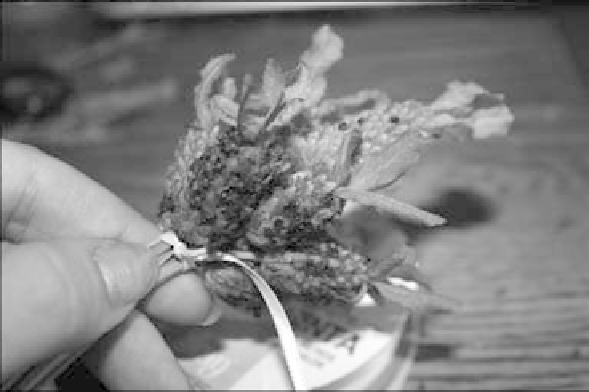Agriculture Reference
In-Depth Information
Hold them with the flower heads even with each other, and tie a long, narrow ribbon around them
at the base of the flowers. I would leave the length of the ribbon extra long so that you don't wind
up running out. The tail of the knot can tuck right into the bunch of stems. Tie this nice and tight
so that it doesn't come loose or undone.
These lavenders have round, thick flower heads while other lavender varieties have long, thin flower spikes.
Both will work for lavender wand weaving.
And this is why you need them to bend but not break: taking two stems at a time, fold them down
over the knot and wrap the long end of your ribbon around them. Bend two more stems down,
but this time on top of the ribbon. Again, fold two down and wrap the ribbon on top of them.
Keep folding the stems and weaving the ribbon this way—over, under, over, under—until you have
folded them all down. The last fold will be three rather than two, but it will mark your place and
work itself out in a minute.
On the next row, alternate them. If you went over on a pair, go under. If you went under, go over.
This will create a pretty pattern as well as secure them tightly.
Circle around for a few rows, and then switch to going over and under single stems rather than
pairs. Keep the ribbon as close to the row above as possible, and the flowers inside. By pulling the
ribbon progressively looser toward the middle and tighter as you get to the end of the stems, you
will create an oval shape.













